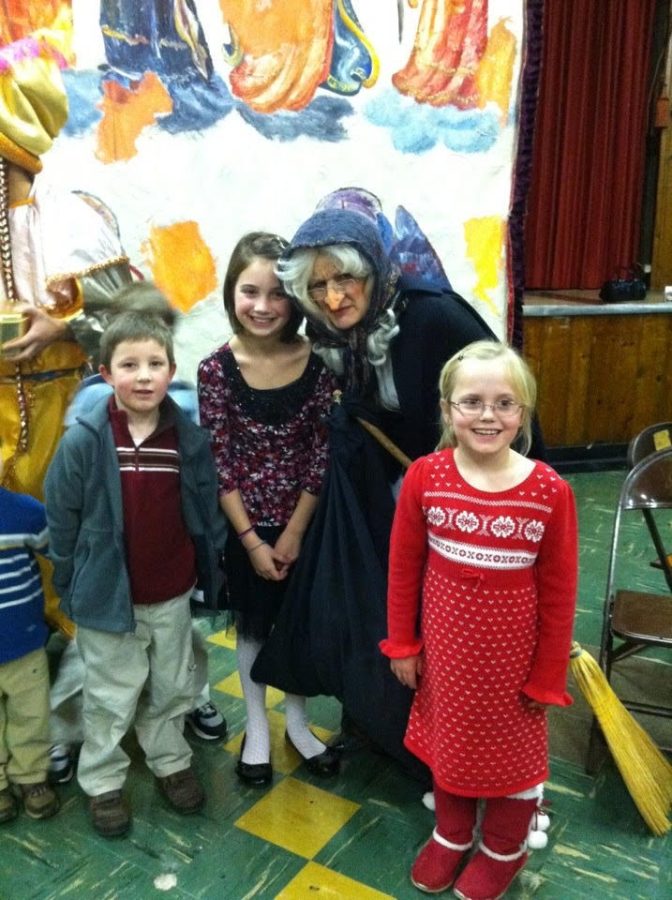La Befana, the old Italian tale
Matt Klos ‘24, Caroline Klos ‘20, and Juliana Moran pose for a photo with the La Befana impersonator after mass at Our Lady of Pompei in January of 2014 (photo courtesy of Klos).
December 14, 2022
If you have any Italian neighbors, keep a close listen on the eve of Jan. 5 and you might hear this chanted from a bordering yard.
The tale of La Befana portrays an old lady–often misinterpreted for a witch–overloaded with housework and chores. On their way to deliver gifts to baby Jesus, the Three Kings (Magi) came across La Befana. They asked her to come with them, but she refused, claiming she had too much housework to do. La Befana later realized it had been a grave mistake not to go with them. She then ran off with her broom in search of the Kings, bearing her own presents for the baby Jesus. However, La Befana never caught up to them. It’s said that La Befana is still searching for the baby Jesus to this day and as she does so, brings gifts to all boys and girls along her way.
This story is definitely one I will never forget. Every morning of Jan. 6, my family and I travel to Our Lady of Pompeii, the oldest continuing Italian American church in Chicago, for a La Befana mass. During this mass, an old lady dressed as La Befana makes a guest appearance. Walking down the aisle, her pointy nose and witch-like clothes are on full display for the church to see. After mass, there is a banquet held in the church’s hall. This is where little kids are able to interact with the La Befana impersonator and receive gifts. Although the activity is focused on entertaining little kids, the hall is always packed with multi-generational Italian-American families hoping their little ones will have the chance to meet La Befana. La Befana visits my cousins and me each year to bring presents and joy, just as Santa Claus does for children around the world.
The one part I most enjoy about this holiday is the tradition and the certain order we continue each year. My grandpa runs the show, teaching my younger cousins the folklore. We begin with a chant to get La Befana’s attention. After shouting the authoritative chant into the cold January sky, we go upstairs, where my grandpa begins to read to us the old folklore. What waits for us downstairs is only a secret to my little cousins, although I still enjoy seeing their reactions every year.
After the short folklore we head downstairs to the front porch. Toys, video games, candy, socks, clothes, and if you’re lucky, gift cards lay within the bag. As soon as we head downstairs, it’s a race to see who will reach their bag first. Each bag, organized by our names, is ripped, destroyed, and looks as if a puppy found them by the time we are finished dissecting our presents from them. Pieces of bags, candy wrappers, and wrapping paper cover the floor like a carpet every year. Although my time receiving gifts in this celebration is coming to an end, this tradition has still solidified itself as one of my favorite holiday celebrations each year.
The story and celebration of La Befana means more to me than just receiving gifts and toys. This holiday is a way to unite families and build core memories for children that they won’t forget. The joy and excitement of my little cousins reminds me of the exhilaration and the delight I remember so well from my younger days.





















![Movie poster for '[Rec]" (2007).](https://www.lionnewspaper.com/wp-content/uploads/2023/04/rec-640x900.jpg)



